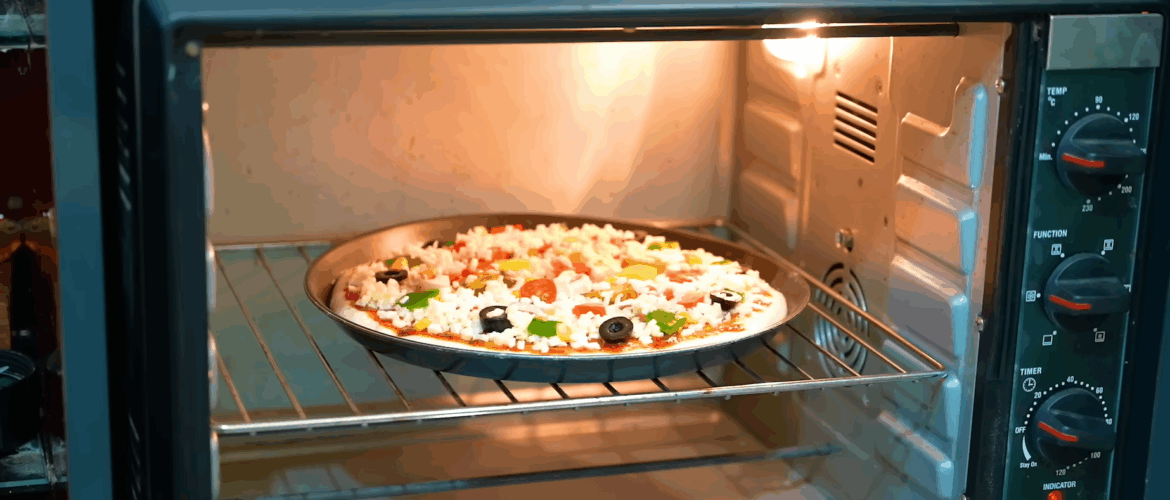When it comes to our kitchens, one question keeps popping up: Can a toaster oven really take the place of a full-sized oven? We’ve asked ourselves this plenty of times, especially when space is limited or when we just don’t feel like firing up the big oven for a small meal. Let’s take a closer look together and see whether a toaster oven can truly work as a full oven replacement.
What Exactly Is a Toaster Oven?
A toaster oven is not just a fancy toaster, even though the name might suggest it.
It’s basically a mini oven with a heatproof door, heating elements, and adjustable temperature settings. Think of it as a downsized version of a traditional oven, but one that heats up faster and uses less energy.
People often use it for toast, pizza, small cuts of meat, or roasted vegetables. But the big question is: can it actually replace the oven completely?
Advantages of Using a Toaster Oven
If you’ve ever used one, you know it’s incredibly convenient.
Here are some of its best perks:
Fast preheating – while a standard oven can take 10–15 minutes to heat up, a toaster oven usually needs just a few minutes.
Energy efficiency – less space to heat means lower electricity use.
Compact size – perfect for small kitchens or apartments.
Versatility – baking, broiling, toasting, reheating, and with some models, even convection baking.
When we think about everyday meals, a toaster oven can handle quite a lot: toast, chicken thighs, lasagna, roasted pumpkin, cookies, or even smaller cakes.
The Drawbacks We Need to Consider
Of course, it wouldn’t be fair to only look at the positives. A toaster oven does have its limits.
Limited capacity – you won’t be roasting a whole turkey or fitting a large sheet pan inside.
Uneven heating – while modern convection models are better, some toaster ovens can still bake a little unevenly.
Durability and lifespan – traditional ovens are built to last for decades, while toaster ovens generally have a shorter lifespan.
When Can a Toaster Oven Fully Replace an Oven?
Here’s the million-dollar question: When is it realistic to say a toaster oven is enough on its own?
For small households – if you’re cooking for one or two people, it often gets the job done.
For simpler meals – roasting vegetables, baking fish, cooking small portions of chicken, or making simple desserts.
For energy savings – if cutting down on power use is a priority, a toaster oven is definitely the better option.
That said, if you’ve got a big family, bake bread regularly, roast large cuts of meat, or enjoy making multiple trays of cookies at once, a full-sized oven is irreplaceable.
Toaster Oven vs. Regular Oven – A Quick Comparison
| Feature | Toaster Oven | Regular Oven |
|---|---|---|
| Size | Small, compact | Large, full-sized |
| Energy use | Lower | Higher |
| Preheat time | 3–5 minutes | 10–15 minutes |
| Capacity | 1 small tray | Multiple trays at once |
| Versatility | Toasting, baking, broiling | Full baking & roasting, bread, large meats |
| Price | More affordable | More expensive |
This chart makes it clear: both have their place. The real question is what we use the oven for most often.
Real-Life Examples – What Can You Cook in a Toaster Oven?
Let’s make it practical. Here are a few everyday foods a toaster oven handles perfectly:
Toast and sandwiches – quick, crispy, and no need for the big oven.
Personal pizza – cooks beautifully, especially with a broil function.
Chicken thighs or fish – small portions cook quickly and evenly.
Desserts – muffins, brownies, or cookies turn out great.
Vegetable sides – pumpkin, eggplant, bell peppers, or zucchini come out flavorful and slightly crispy.
Tips If You’re Considering Switching to a Toaster Oven
Go for a quality model – convection options are worth it for more even baking.
Get the right bakeware – standard baking sheets don’t fit, but many brands sell toaster oven–sized pans.
Watch the temperature – they heat up faster, which makes overcooking more likely if you’re not careful.
Experiment a little – every toaster oven works differently, so test cooking times for your favorite dishes.
Safety and Maintenance – What to Keep in Mind When Using a Toaster Oven
When we choose a toaster oven, it’s not only about what we can cook in it — it’s also about how we can use it safely and keep it working for the long haul.
Placement – never push it directly against a wall or keep it near flammable materials. The exterior can get quite hot.
Avoid overloading – don’t try to squeeze in portions that are too large, as this can ruin your food and strain the appliance.
Regular cleaning – grease, crumbs, and food residue can be a fire hazard. Wipe it down weekly and give it a deeper clean once a month.
Use the right bakeware – avoid plastic or paper containers, since they can melt or catch fire.
Unplug after use – it’s both safer and more energy-efficient to disconnect it when you’re done cooking.
Conclusion
If we had to answer in one sentence: it depends.
A toaster oven can absolutely be a fantastic alternative in many cases. If we live in a small household, cook smaller portions, or want to save on electricity, then yes — a toaster oven can cover most of our needs.
But for big families, ambitious baking projects, or holiday meals, the traditional oven remains essential.
Our take: don’t throw out your oven just yet. Instead, think of the toaster oven as a powerful sidekick. Using both together gives you the most flexibility and comfort in the kitchen.






